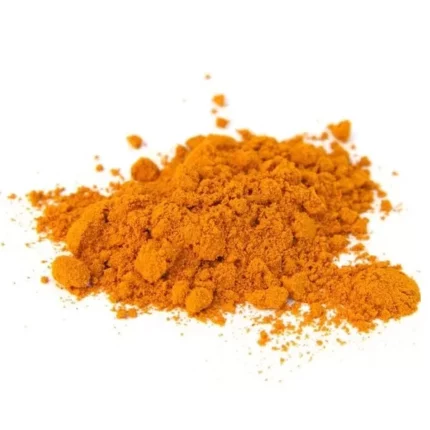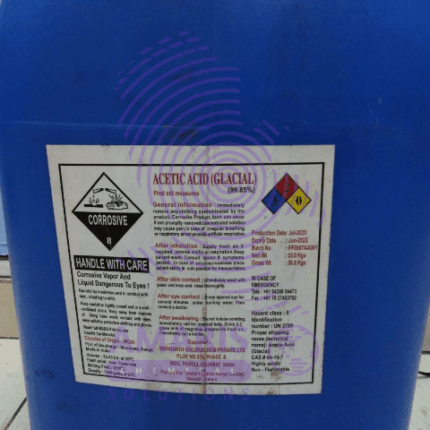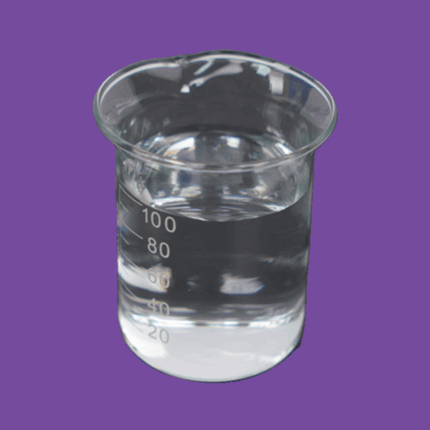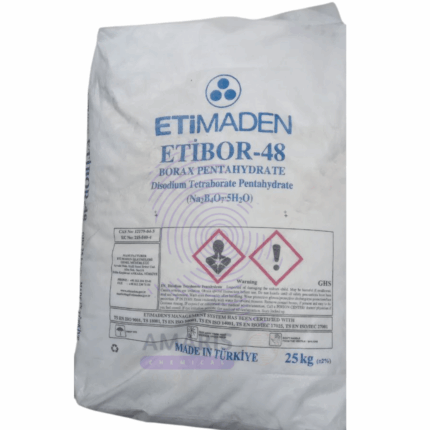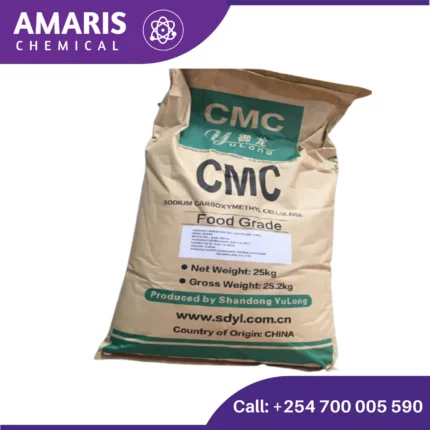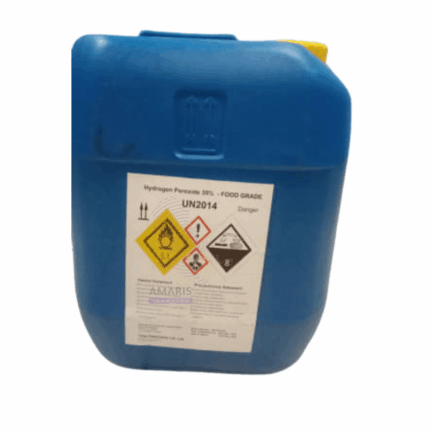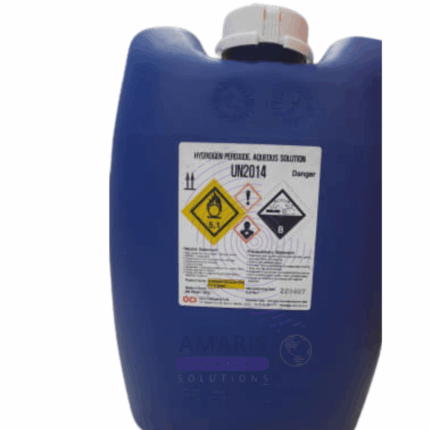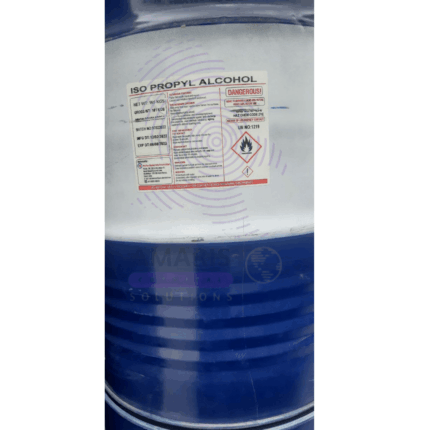![Powder Sodium Mono Fluoro Phosphate [Na2PO3F]](https://amarischemicalsolutions.com/wp-content/uploads/2025/05/Powder-Sodium-Mono-Fluoro-Phosphate-amaris-chemical-solutions-jpg-430x430.webp)
CarboxyMethyl Cellulose (CMC) Detergent Grade
$0.01 Original price was: $0.01.$0.00Current price is: $0.00.
CarboxyMethyl Cellulose (CMC) Detergent Grade is a water-soluble polymer that is derived from cellulose, which is a naturally occurring polymer found in plant cell walls. CMC is produced by chemically modifying cellulose through the addition of carboxymethyl groups, which gives it its unique properties such as high water solubility, thickening ability, and film-forming properties.
CMC is widely used in a variety of industries, including food, pharmaceuticals, cosmetics, and textiles, as a thickener, binder, stabilizer, emulsifier, and dispersant. It is commonly found in food products such as ice cream, salad dressings, and baked goods as a thickener and emulsifier, as well as in cosmetics and personal care products such as toothpaste and shampoo as a binder and stabilizer.
CarboxyMethyl Cellulose (CMC) Detergent Grade Uses
Primary Uses of Detergent-Grade CMC
1. Laundry Detergents & Fabric Care
-
Anti-Redeposition Agent:
-
Prevents dirt and stains from reattaching to fabrics during washing.
-
Enhances washing efficiency in both powder and liquid detergents.
-
-
Soil Suspension:
-
Keeps loosened dirt particles suspended in water, preventing re-deposition.
-
-
Fabric Softening & Anti-Graying:
-
Improves fabric brightness by reducing graying caused by dirt buildup.
-
-
Stabilizer for Enzymes:
-
Protects and stabilizes detergent enzymes (e.g., proteases, amylases).
-
2. Dishwashing & Cleaning Products
-
Dishwasher Detergents:
-
Prevents food particles from redepositing on dishes.
-
-
Hard Surface Cleaners:
-
Enhances viscosity and improves cling on vertical surfaces (e.g., toilet cleaners).
-
3. Industrial & Institutional Cleaners
-
Textile & Carpet Cleaning:
-
Used in industrial laundry detergents for hotels and hospitals.
-
-
Metal & Machinery Cleaners:
-
Helps suspend grease and metal particles in degreasers.
-
Secondary Uses of Detergent-Grade CMC
1. Oil & Gas Industry
-
Drilling Mud Additive:
-
Acts as a viscosifier and fluid-loss control agent.
-
-
Enhanced Oil Recovery (EOR):
-
Improves water viscosity for better oil displacement.
-
2. Paper & Pulp Industry
-
Coating & Sizing Agent:
-
Improves paper strength and printability.
-
3. Construction & Ceramics
-
Tile Adhesives & Cement Additives:
-
Enhances water retention and workability.
-
4. Agriculture
-
Pesticide & Herbicide Formulations:
-
Acts as a dispersant and stabilizer in agrochemical sprays.
-
5. Paints & Coatings
-
Thickener for Water-Based Paints:
-
Prevents pigment settling
-
| AVAILABLE PACK SIZE |
25kg( Metal or Plastic Jerrycan/ Bucket, Bag, Box, Polythene bag, Carton bag) |
|---|
1. Basic Identification Attributes
- Chemical Name:Sodium Carboxymethyl Cellulose
- Common/Trade Names:CMC, Cellulose Gum, Detergent-Grade CMC
- CAS Number:9004-32-4
- HS Code:31.00 (Cellulose ethers)
- Molecular Formula:C6H7O2(OH)x(OCH2COONa)γC6H7O2(OH)x(OCH2COONa)γₙ
- Synonyms:Na-CMC, CMC-Na, Cellulose Glycolate
2. Physical & Chemical Properties
- Physical State:Free-flowing white to off-white powder
- Color & Odor:Odorless, slight hygroscopicity
- Boiling Point:Decomposes before boiling (~200–300°C)
- Melting Point:No distinct melting point (softens/chars at high temps)
- Density:~1.6 g/cm³ (bulk density varies with substitution degree)
- Solubility:
- Soluble in cold/hot water (forms viscous solutions)
- Insoluble in organic solvents (ethanol, acetone, oils)
- pH Level:5–8.5 (1% solution)
- Vapor Pressure:Negligible
- Flash Point:Non-flammable
- Viscosity:Typically 200–1,500 mPa·s (1% solution, varies by grade)
3. Safety & Hazard Attributes
- Hazard Class (GHS):Non-hazardous (no GHS classification for detergent-grade CMC)
- NFPA Ratings:
- Health: 0(No significant hazard)
- Flammability: 0(Non-flammable)
- Reactivity: 0(Stable)
- Exposure Limits (OSHA/ACGIH):Not established (low toxicity)
- Reactivity:
- Stable under normal conditions
- Avoid strong oxidizers (e.g., hypochlorite)
4. Storage & Handling Attributes
- Storage Conditions:
- Dry, cool place (<30°C, humidity <60%)
- Avoid moisture to prevent caking
- Incompatible Materials:Strong acids, oxidizing agents
- Container Type:Polyethylene-lined bags, fiber drums
- Shelf Life:2–3 years (if stored properly)
- Special Handling:
- Minimize dust generation (use masks if airborne)
- No special ventilation required
5. Regulatory & Compliance Attributes
- Regulatory Status:
- EPA (USA):Not regulated as hazardous
- EU REACH:Registered (no restrictions)
- DOT/IMO:Non-hazardous for transport
- Hazard Symbols:None
- Transportation Restrictions:No UN number (shipped as general chemical)
- Waste Disposal:Landfill or incineration (follow local regulations)
6. Environmental & Health Impact
- Ecotoxicity:Low (OECD 301D: >60% biodegradable)
- Persistence:Readily biodegradable
- Carcinogenicity/Mutagenicity:
- IARC/OSHA:Not classified
- Biodegradability:Aerobically degradable (cellulose backbone)
Personal Protective Equipment (PPE)
- Eyes:Wear chemical goggles (sealed) to prevent dust/splash irritation.
- Respiratory Protection:Use an N95 mask or half-face respirator when handling powder to avoid inhalation.
- Skin Protection:Wear chemical-resistant gloves (nitrile or neoprene) and an apron or coveralls to prevent skin contact.
- Footwear:Closed-toe shoes to prevent spills on feet.
Handling & Storage
- Ventilation:Use local exhaust ventilation or work in a well-ventilated area.
- Dust Control:Avoid creating dust clouds; use slow pouring or automated dispensing.
- Storage:Keep in a cool, dry, and well-ventilated area, away from:
- Strong acids/bases(may degrade CMC).
- Oxidizers(risk of decomposition).
- Moisture(may cause clumping).
- Incompatibilities:Avoid contact with hypochlorite bleach (may react).
Hygiene Practices
- Wash hands and exposed skin thoroughlyafter handling.
- No eating, drinking, or smokingin the work area.
Inhalation (Dust Exposure)
- Move to fresh air immediately.
- If coughing or breathing difficulty occurs, seek medical attention.
Skin Contact
- Wash with soap and waterfor at least 15 minutes.
- If irritation or rash develops, consult a doctor.
Eye Contact
- Rinse immediately with plenty of water (15+ minutes), holding eyelids open.
- Seek medical attentionif irritation persists.
Ingestion (Unlikely but Possible)
- Rinse mouth with water.
- Do NOT induce vomiting(risk of aspiration).
- If swallowed in large amounts, seek medical advice.
Flammability:
- CMC detergent grade is non-flammable, but dust clouds may pose a combustion hazardin high concentrations.
Decomposition Products:
- When burned, may release carbon monoxide (CO), carbon dioxide (CO₂), and traces of formaldehyde.
Extinguishing Media:
- Water spray, foam, CO₂, or dry chemical
Firefighter Protection:
- Wear SCBA (self-contained breathing apparatus)due to potential toxic fumes.
- Cool containers exposed to fire with water to prevent rupture.
Small Spills
- Wear PPE (gloves, mask, goggles).
- Sweep or vacuum (with HEPA filter)to avoid dust dispersion.
- Dispose of as non-hazardous waste(check local regulations).
Large Spills
- Contain with absorbent materials(vermiculite, sand).
- Collect and dispose of properly(avoid drains due to clogging risk).


 Emollients
Emollients Humectants
Humectants UV Filters
UV Filters Surfactants (cosmetic)
Surfactants (cosmetic) Preservatives (cosmetic)
Preservatives (cosmetic) Fragrances and Essential Oils
Fragrances and Essential Oils Antioxidants (cosmetics)
Antioxidants (cosmetics)
 Solvents (lab)
Solvents (lab) Chromatography Chemicals
Chromatography Chemicals Microbiology and Cell Culture Reagents
Microbiology and Cell Culture Reagents Biochemical Reagents
Biochemical Reagents Inorganic and Organic Standards
Inorganic and Organic Standards Spectroscopy Reagents
Spectroscopy Reagents Molecular Biology Reagents
Molecular Biology Reagents
 Precious Metal Extraction Agents
Precious Metal Extraction Agents
 Plasticizers
Plasticizers Polymerization Initiators
Polymerization Initiators Stabilizers
Stabilizers Monomers
Monomers Fillers and Reinforcements
Fillers and Reinforcements Antioxidants (plastics)
Antioxidants (plastics) Colorants (plastic pigments,Dyes)
Colorants (plastic pigments,Dyes)
 Fertilizers
Fertilizers Plant Growth Regulators
Plant Growth Regulators Soil Conditioners
Soil Conditioners Animal Feed Additives
Animal Feed Additives Biostimulants
Biostimulants
 Dough Conditioners
Dough Conditioners Flour Treatments
Flour Treatments Fat Replacers
Fat Replacers Preservatives (baking)
Preservatives (baking)
 Surfactants (cleaning)
Surfactants (cleaning) Builders
Builders Bleaching Agents
Bleaching Agents Enzymes
Enzymes Solvents (cleaning)
Solvents (cleaning) Fragrances
Fragrances Disinfectant
Disinfectant Metal cleaning
Metal cleaning
 Binders/Resins
Binders/Resins Pigments
Pigments Solvents (paint)
Solvents (paint) Additives
Additives Driers
Driers Anti-Corrosion Agents
Anti-Corrosion Agents Specialty Coatings
Specialty Coatings Functional Coatings
Functional Coatings Application-Specific Coatings
Application-Specific Coatings
 Sealants and Adhesives
Sealants and Adhesives
 Biodegradable Surfactants
Biodegradable Surfactants Bio-based Solvents
Bio-based Solvents Renewable Polymers
Renewable Polymers Carbon Capture Chemicals
Carbon Capture Chemicals Wastewater Treatment Chemicals
Wastewater Treatment Chemicals
 Preservatives (food)
Preservatives (food) Flavor Enhancers
Flavor Enhancers Acidulants
Acidulants Sweeteners
Sweeteners Emulsifiers
Emulsifiers Antioxidants (food)
Antioxidants (food) Colorants (food)
Colorants (food) Nutrient Supplements
Nutrient Supplements Nutraceutical Ingredients
Nutraceutical Ingredients
 Fresh Herbs
Fresh Herbs Whole Spices
Whole Spices Ground Spices
Ground Spices Spice Blends
Spice Blends
 Surfactants(oil)
Surfactants(oil)
 Antibiotics
Antibiotics Active Pharmaceutical Ingredients
Active Pharmaceutical Ingredients Excipients
Excipients Vaccine Adjuvants
Vaccine Adjuvants Nutraceutical Ingredients
Nutraceutical Ingredients Solvents (pharmaceutical)
Solvents (pharmaceutical)
 Automotive chemicals
Automotive chemicals Pyrotechnic Chemicals
Pyrotechnic Chemicals


 Vulcanizing Agents
Vulcanizing Agents Accelerators & Retarders
Accelerators & Retarders Antidegradants
Antidegradants Reinforcing Agents
Reinforcing Agents Plasticizers & Softeners
Plasticizers & Softeners Fillers & Extenders
Fillers & Extenders Blowing Agents
Blowing Agents Adhesion Promoters
Adhesion Promoters

